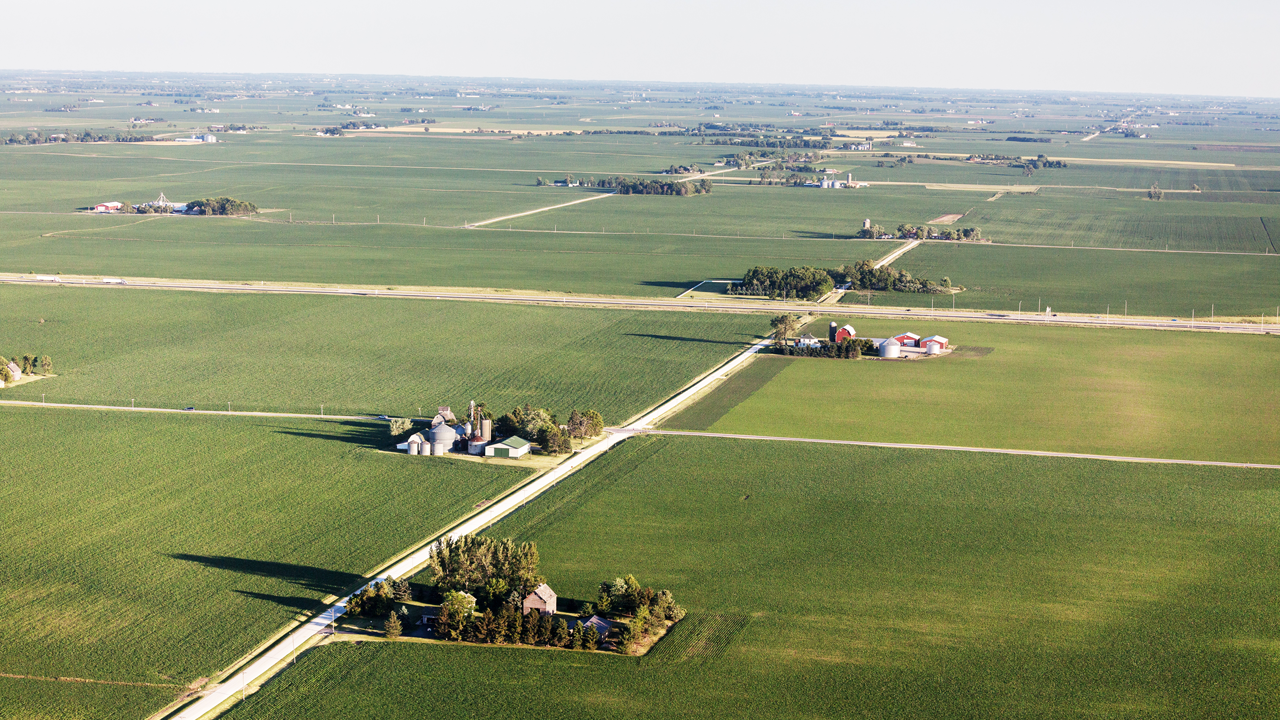
New research projects underway within University of Minnesota Extension aim to support the prosperity of rural areas across the state.
In May, Extension received two grants from the US Department of Agriculture geared toward bolstering economies in Greater Minnesota. The grants, which total nearly $1 million and come from the USDA’s National Institute of Food and Agriculture, are the latest in a series of efforts both within Extension and elsewhere across the University, such as in the Office of University Economic Development, to promote economic development in Minnesota’s small towns and rural communities.
About half of the funds will go toward research into helping communities recruit and retain workers to maintain a robust economy, and the other half for research into connecting small- and mid-sized farms to wholesale distributors.
Building a Foundation for Brain Gain
For years, Extension researchers have documented a spike in people ages 30 to 50 moving from Minnesota’s suburbs and big cities to its small towns.
Now, through the USDA funding, Extension’s Center for Community Vitality will expand on this research to better understand the influx of people with established careers, occupational skills, and young families moving to rural communities—a trend dubbed “brain gain”—and how these newcomers integrate into rural communities.
Brain gain works opposite to the well-known “brain drain” trend, where 18- to 25-year-olds leave their small home towns after high school seeking a college education and jobs in the big city. Kent Olson, Ph.D., associated dean of CCV and principal investigator on the study, noted in a May announcement that understanding how to promote brain gain could help fill job vacancies left behind as baby boomers retire.
“Employers and communities are very concerned about that workforce, and many Minnesota communities are genuinely interested in learning how they can attract residents,” Olson said. “This project will allow us to better understand why people move to rural areas and what makes communities successful in keeping them. As initiatives sprout up around Minnesota, we want to know what works.”
Researchers from CCV and the Humphrey School of Public Affairs will use surveys, focus groups, and demographic analysis to study the characteristics of newcomers to rural areas, how well different types of newcomers integrate into rural communities, what private strategies and public policies help attract and retain newcomers, and what the experiences of minority and immigrant residents in those areas are.
The findings will inform future Extension educational programs and economic development initiatives, as well as policy-making and initiative planning in communities across the state.
Connecting Local Crops to a Wider Market
The success of local farms is important to any rural, agricultural community. Researchers in Extension’s Regional Sustainable Development Partnerships may soon find a way to boost local growers’ economic potential.
Through the USDA funding, RSDP researchers will study how small- and medium-sized farms can best get their produce to wholesalers for wider distribution. Access to the wholesale market is important for the success of these farms because it can increase their viability, competitiveness, and sustainability.
The research, which builds upon nearly two decades of RSDP research and outreach into regional food systems, will bring researchers together with stakeholders from across the food supply chain, including producers, grocers, wholesalers and regulators. Their collaboration will focus on “backhauling” practices, where delivery trucks use their return trips to carry locally grown foods from rural grocers to wholesale distribution centers.
Kathryn Draeger, Ph.D., statewide director of RSDP, will co-lead the study with Hikaru Peterson, Ph.D., professor of applied economics in the College of Food, Agricultural, and Natural Resource Sciences.
“We need to understand the complexities of farm-to-grocer-to-wholesale, including logistical, financial and regulatory challenges,” Draeger said in the May announcement. “This innovative research will help us learn how we can build systems for local food growers, help wholesalers, and support grocers, who are such an essential part of Main Street across Minnesota.”
Immigration as a Key to Future Growth
The two USDA-funded Extension projects above aren’t the only efforts to bolster Greater Minnesota economies. Maura Donovan, executive director of the U’s Office of University Economic Development, and Bill Blazar, senior vice president of public affairs and business development with the Minnesota Chamber of Commerce, recently visited communities across the state to discuss the key role immigration will play in its workforce.
Minnesota’s aging population is projected to grow at a much slower rate beginning in 2030, Donovan and Blazar noted in a Pioneer Press op-ed.
“In order to maintain the growth in the labor force, we will need to attract nearly five times the number of people now moving here,” they wrote. “And because the current net migration to Minnesota is wholly composed of international migration, it’s likely we will need to rely on mostly foreign-born people to grow our population.”
Donovan and Blazar’s statewide conversations were based on a workforce study conducted by Ryan Allen, Ph.D., associate professor in the Humphrey School of Public Affairs and commissioned by the Committee on Minnesota Workforce and Immigrants. The study was conducted to provide a well-researched foundation for workforce and immigration discussions.
Learn more about the importance of immigration to Minnesota’s economic future.